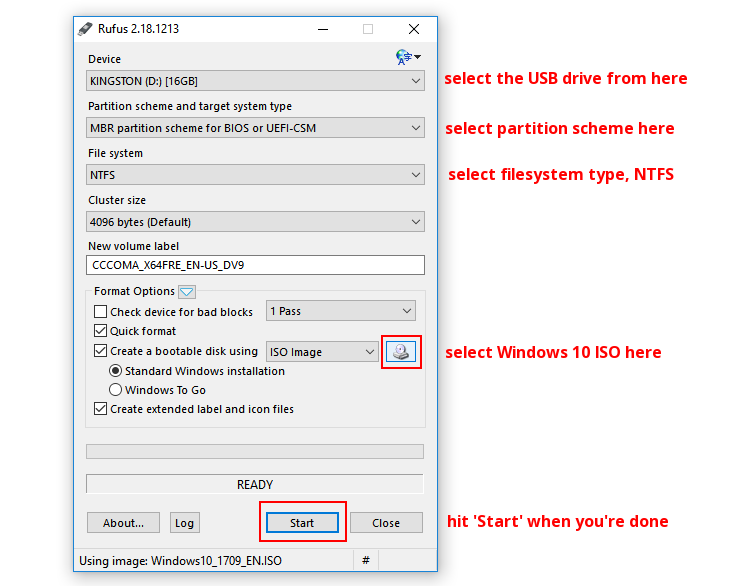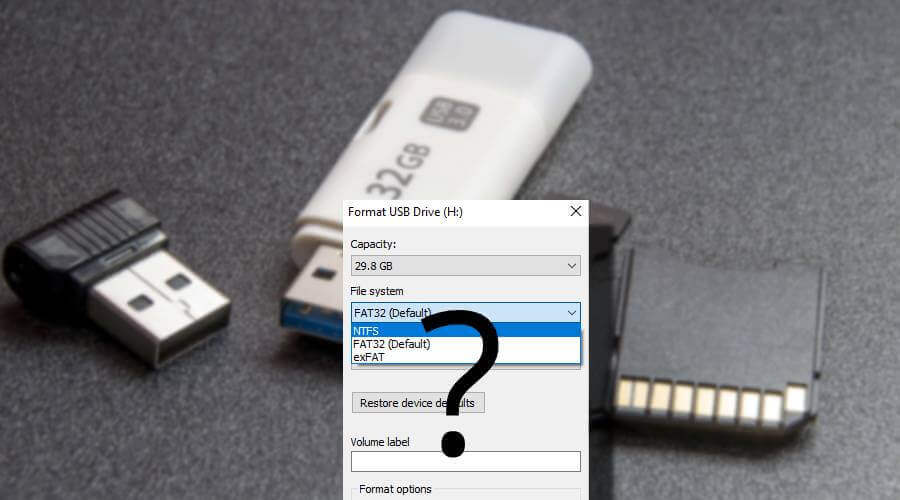

- #WINDOWS ISO TO USB FAT32 VS NTFS HOW TO#
- #WINDOWS ISO TO USB FAT32 VS NTFS INSTALL#
- #WINDOWS ISO TO USB FAT32 VS NTFS DOWNLOAD#
imgPTN file is larger than 4GB, your E2B USB drive must be formatted as NTFS and it will still be possible to UEFI-boot from a FAT32. imgPTN file because none of the files inside the ISO are more than 4GB in size.

#WINDOWS ISO TO USB FAT32 VS NTFS INSTALL#
The Windows 7 Tool mentioned in another reply will in fact create a flash drive for Windows 10, but only for Legacy Bios machines. For instance, a 6GB Windows 10 Install ISO can be converted to a FAT32. I have had mixed success with this as far as the media being bootable is concerned.Īlso. Just dragging the relevant files onto a Flash Drive may or may not work.

Some automatically detect the UEFI installation based on the GPT\FAT32 Flash Drive, and others require it toīe determined by a "Boot Options " selection.īTW. The installation process in UEFI machines can vary due to different Bios requirements as to how the Installation media is loaded. If these criterial are not met, the installation will fail. same as the HDD\SSD, but needs to use FAT32 File type. UEFI Bios machines require the HDD\SSD to be GPT type, and NTFS File structure.Ī wrinkle for the installation media on a Flash Drive is that the Flash Drive needs to be GPT type. The same applies to a Installation Flash Drive. Legacy Bios machines require the HDD\SSD to be MBR type, and NTFS File structure. Unable to create bootable windows usb from linux mint. If you are using BIOS, then use Rufus and select MBR for BIOS and it will automatically use NTFS. Thats all, it should boot fine with UEFI. Is any Ubuntu on a bootable usb a 'live usb' 0. Just format your USB drive as FAT32, then use 7zip to extract the ISO file (or double-click to mount it, then Ctrl-A and copy all the files from the virtual drive) and then copy the files to your USB drive.
#WINDOWS ISO TO USB FAT32 VS NTFS HOW TO#
And is therefore usable for any machine simply by reburning it to media.Īt one time this was not a problem, but with the emergence of UEFI Bios machines, there was a bit of a wrench thrown into the works. How to install linux on a laptop that doesnt recognise FAT32 bootable media in boot menu 1.
#WINDOWS ISO TO USB FAT32 VS NTFS DOWNLOAD#
If you use the Media Creation Tool to simply download a ISO, the ISO can be put on media specifically for the intended machine using RUFUS for instance. I have encountered a number of threads in which the Flash Drive created by the Media Creation process would not work with a UEFI Bios machine. It can create media for the machine that it was run on, and not specifically for the machine that the media is intended for, and may not be compatible. The Media Creation Tool may or may not do what you need it to do as far as creating a Installation USB Flash Drive goes.įor instance.


 0 kommentar(er)
0 kommentar(er)
